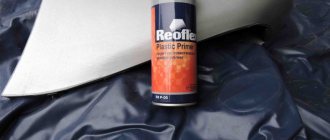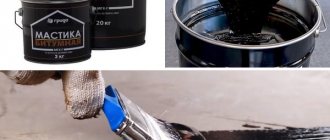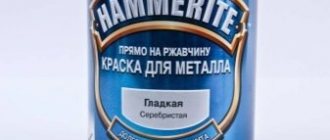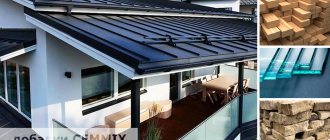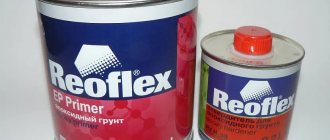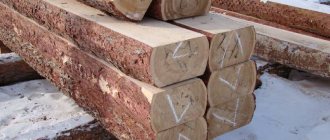The most common background color for wallpaper is light. If the wallpaper is also thin, then it will not be able to hide the color and imperfections of the rough surface. White primer is used to neutralize the color of the rough surface. White primers are used before applying a finish coat that differs in color from the rough coat.
Aligning the color of the base under the wallpaper.
After filling and sanding, hares can be seen in places.
In these places, the thickness of the putty is below 0. If putty is applied again to these places, the evenness will be disrupted. That is, you need to apply another layer of putty over the entire area. I wouldn’t want to do this, since the surface is even and smooth. There are primers for wallpaper that even out the color of the base, but we don’t have them on sale. There is Vincent Decor for multi-layer coatings. The instructions do not mention wallpaper. Will it go under wallpaper? What is the goal being pursued? Do you want to stick transparent plastic film on the walls? So stick on the black one.
Personally, in such cases I use the cheapest acrylic paint or covering primer. It helps, but of course this is not the final truth.
2ruslan1111 What kind of covering primer? Apparently one that is not on sale here. What kind of acrylic paint (water-based or solvent-based)?
No, but still interesting. what kind of wallpaper do you want to hang? How transparent are they that you can see the wall through them? Ordinary wallpaper hides such things tightly; it never occurs to anyone to worry about the uneven color of the wall under the wallpaper. Why do you need extra hemorrhoids? But if there really is a reason, then Ruslan111 is right: the cheapest water-based emulsion.
Profan27 wrote: Ordinary wallpaper hides such things tightly, it never occurs to anyone to worry about the uneven color of the wall under the wallpaper.
I had this. I didn’t attach any importance to these spots, since I had never encountered them before. Moreover, as a rule, I do not have such spots. This happens with uneven gray plaster and white putty. Or, as in this case, the client refused to plaster the concrete, just putty and glue. I purchased white wallpaper with a large pattern. We glued the wall and noticed some stains appearing. I thought that the stains would disappear when they dried, but it turned out not to be the case. I had to tear off and buy wallpaper at my own expense. The walls were painted (tinted) with regular white ceiling paint (Tikkurila Euro 2).
sergmih wrote: What kind of covering primer? Apparently one that is not on sale here. What kind of acrylic paint (water-based or solvent-based)?
Yes, that’s what it’s called “covering primer.” It’s just cheaper than the cheapest paint (we really only have it in one store in the city, and it’s not always for 100 rubles in a 3kg can). And the paint is regular acrylic water-based, the worst. I usually take “ aloe" (this is not an advertisement, it’s just cheap and crap, unlike the wallpaper glue of the same sharaga, it suits me despite the ridiculous price of 55 rubles).
I'll raise the topic, the problem is the same
we have smooth walls, plaster based on cement/sand - but FLAT)), in some places (where wiring, sockets, etc.) are rubbed with something plaster (white in color), non-woven meter-long wallpaper in light colors is planned, based on the experience of the previous apartment — such shoals are really visible. in this apartment you need to make sure that the base for the wallpaper is the same color in order to achieve this result:
- thin plaster/putty is not an option - the area is huge, it will be expensive, and the walls are even
- special paint for wallpaper - in our city they shrug their shoulders, they’ve never seen it before
- ordinary water emulsion. (as I understand it, this is acrylic), but I’m just wondering - they come in interior design, for interior/exterior work, or just take the cheapest one, which leaves marks on your hand after stroking the wall)) ??
after the last general cleaning of the apartment (before laying the laminate and subsequent wallpapering), I plan to cover all the walls and floor with a “primer” in the form of regular PVA diluted with water - will it work? and then with water emulsion to even out the color on the walls? won't the wallpaper fall off later?
Is it possible to change the color of the deep penetration primer, or are primers not tinted?
We are preparing the walls for painting, is it possible to change the color of the usual deep penetration primer, or is this not done and the paint needs to be tinted?
The main purpose of deep penetration primers is to reduce paint consumption, strengthen the base, improve adhesion between layers, etc.
The deep penetration primer does not carry any “artistic” load.
This is not a finishing layer, unlike paint, but an intermediate one.
If you need to change the background of the base, then this is done with paints that can be tinted.
That is, at the beginning the surface is primed with deep penetration primers, then the paint of the desired color is selected, or the base white paint is tinted and then painted.
And there is no need to change the color of the primer; in practice, this is not done (if we are talking about preparing walls, ceilings for painting, or surfaces being prepared for liquid wallpaper, decorative plaster, etc.).
It is not the color of the primer that is important, but its tone; the tone can be light or dark.
But if you still need to change the color of the primer for something, then theoretically this can be done.
You need to buy this water-soluble color
Since there is no technology for tinting deep penetration primers (it is simply not needed in practice), select the proportions according to the location.
Of course, there are also tintable primers on sale, but these are not deep penetration primers.
If you want to make the background only using primer and color, it won’t work (I tried), the wall will become stained.
You need both a primer and paint, and the primer is just the base on which the paint is applied.
Deep penetration primer is called so that it has the ability to penetrate into the loose environment of the plaster, there are types of primer that can penetrate up to 10 millimeters, but this is actually too deep.
On the contrary, they create a film on the surface, which helps the material following it to better adhere.
The property of penetration in a common physical phenomenon, when water is able to break down into molecules and, like a sponge, be absorbed into almost any loose material.
But besides water, there are other substances in the soil (resins, polymers, antiseptics and others), the main task is to ensure that none of these substances are so large that they cannot penetrate with water into the pores of the material.
Why I told this, the fact is that the dyes are also not large (at least most of them) and can penetrate into the pores, so theoretically the primer can be diluted with the dye and it will become a different color.
But there is one very unpleasant point: you need to know how to dilute the dye in the soil and whether a chemical reaction will occur in which the dye will contribute to the creation of larger particles that are not able to penetrate into the material.
So you need to know whether it is possible to mix primer with dye from certain manufacturers of the floor composition.
By the way, there is a deep penetration primer with an indicator, essentially it is a primer with paint.
Types of white primers for wallpaper: application features
Everyone imagines interior renovation in their own way. After all, there are so many design options, a huge selection of finishing materials and elements with which you can create the desired atmosphere. Over the years, wallpaper has often been used on walls, and today it is no less relevant. Finishing work takes a lot of time and requires preparation; it is important to achieve a smooth surface and also ensure its high adhesion. This is where a primer often helps.
Features of the primer coating
This composition, which is also called prime, performs the task of auxiliary material. Thanks to it, you can successfully cover walls, so it is in demand before the wallpapering procedure. A homogeneous suspension of varying thickness is produced without unpleasant or pungent odors. It may have no color, be white, or have a different shade.
After application to the coating, the mixture dries and a colorless film is created. As for the set of ingredients, the material contains adhesives, organic resins, as well as other additives that are prepared on different bases.
Various additives and fillers are often added to the solution to improve the performance characteristics of the product. The primer can be produced not only in liquid form; often the market offers dry powder, which must be diluted with a certain amount of water.
All data and characteristics are indicated on the packaging, the same applies to the operating instructions, solution consumption, drying time, and expiration date.
Related article: How to demolish a wall in an apartment yourself
Requirements
There are a number of properties that any primer should have. The main characteristic is the depth of penetration of the composition into the surface to be treated. The composition should increase the adhesion of the wallpaper during gluing. Antiseptic qualities are of great importance, since the surface must be protected and the material must be resistant to the appearance of fungus, mold and other representatives of microflora. It is important to carefully study the absorption and drying period, it should be fast.
Before purchasing, you need to decide on the type of primer , and also take into account the characteristics of the room and its operating conditions. Find out in advance what material the wall is made of, since there are different compositions for plaster surfaces, and others for wood and drywall. The efficiency of processing depends on this. It is recommended to consult with a qualified specialist, get his opinion, and take advice.
The composition is selected for a certain type of wallpaper, since they can be traditional and liquid, and for preparatory work it is necessary to select the appropriate version of the finishing material. It is important to study the density of the cladding.
Features of primer-paint
This type of building material belongs to a separate category of emulsions. Its operating principle is to improve adhesion between the initial and final coating. Beginning craftsmen often confuse it with a regular primer.
- A distinctive feature of this type is the presence of special compositions that have the same qualities as decorative paints.
- When applied to a plane, a uniform coating is observed that does not form smudges or strong streaks.
- They have good adhesion to the surface and provide protection from high humidity.
Primer - paints are produced using special enamels with binding properties. In addition, vegetable oils are added to the emulsion, which ensure adhesion density. After drying the primer paint, the surface acquires a matte and uniform structure.
Some compositions provide the appearance of a rough surface, which is used for further decoration.
Scope of application
Priming is an important point that will determine how effective the result of interior decoration with wallpaper will be. The primer solution allows you to achieve an ideal wall surface. This mixture, covering various defects, is intended to level the coating. It may have a coloring pigment, so the composition is often used as the main material for finishing ceilings or walls.
The primer penetrates deeply into the structure of the surface, so it fills cracks and micropores, and can bind dust residues, so the cladding will look perfect, and wallpapering will be done at the highest level without problems or complications. Using the mixture, the material on the walls is disinfected, which makes it possible to increase resistance to factors that can be biologically aggressive.
Using a primer, you can achieve good adhesion, which means that, thanks to the composition, the wallpaper glue adheres perfectly to the coating and the wallpaper itself. Thus, the canvases will not peel off either at the joints or in the corners, which is no less important.
The following types of primer materials exist:
- Acrylic primers are made with the addition of polymer binders. This option is best suited for interior surfaces. The material does not have a strong odor, dries quickly, and can also be applied before gluing various types of canvases. Using the mixture, you can greatly facilitate your finishing work. The hygroscopicity of the surface will be improved, the service life of the facing material will be extended, the surface will be protected from damage, and the consumption of the adhesive composition will be minimized.
- Latex is a natural component that is extracted from the sap of rubber. A primer based on this type in synthetic form is widely used during repair work. It is characterized by high strength, resistance to compression and tension, elasticity and water resistance. The primer is a clear liquid that, after drying, creates excellent adhesion.
What else is priming useful for?
After nails, screws, baseboards, and all sorts of defects have been removed, a layer of putty is applied to the wall. Next, the wall is primed. The following are reasons why a surface should be primed:
- Final dust removal, removal of dirt that could not be removed during puttying.
- Leveling the surface.
- Reducing the consumption rate of adhesive, as the soil clogs cracks and defects in the material.
- Improving adhesion (cohesion of dissimilar materials).
- Strengthening the bottom layer so that the material does not peel off.
- The coating acquires water-repellent properties.
- The surface retains the ability to “breathe”.
- Protection against mold and mildew
Previously, walls were covered with newspapers or other paper before applying wallpaper. To some extent, this method replaced the primer. However, only modern soils can ensure high quality of work performed and the entire list of the above advantages of a primed wall.
Why do you need a primer?
The primer is a liquid emulsion consisting of synthetic polymer resins, water or organic diluents and complex auxiliary additives. It is intended for surface treatment before applying construction leveling mixtures and paint and varnish compositions, as well as before gluing roll and sheet finishing materials.
The primer layer performs several important functions at once:
- Surface strengthening:
- The covering primer penetrates deeply into porous surfaces, and after the diluent evaporates, it firmly binds the solid particles of the material together;
- This allows you to strengthen the surface layer and reduce the formation of dust on mineral building materials (concrete, brick, plaster, putty).
The surface layer of the primer retains water but allows water vapor to pass through.
- Waterproofing properties:
- Polymer resins fill the space between solid particles, due to which the material does not absorb water, but freely allows air and water vapor to pass through;
- This leads to an increase in frost resistance and durability of building materials, since when freezing, water expands and forms tears and microcracks.
- Reducing the consumption of paints and building mixtures:
- Untreated surfaces strongly absorb water and organic solvents when applying construction mixtures, glue and paints;
- After clogging open pores, thinners are not absorbed into the thickness of the materials, which protects glue, paint and other compounds from premature hardening.
To treat ceilings and walls in damp rooms, be sure to use an antiseptic primer.
- Antiseptic properties:
- White pigmented primer contains antimicrobial agents and antiseptic agents;
- This helps protect the material from rotting, and mold does not form on the treated surface.
- Improved adhesion:
- After the diluents evaporate, a thin porous film of polymer resins remains on the surface;
- It is a good basis for applying glue, putty and paint, as it has high adhesion to most finishing materials.
Related article: Artificial stone for interior wall decoration
You can start gluing wallpaper no earlier than one day after applying the primer.
- Color alignment:
- Light wallpaper on a concrete, wooden or brick wall can take on a dirty gray or dirty red tint. The same applies to painting with light interior paints;
- To eliminate the appearance of dark spots, a white primer is used to even out the color of the walls;
- White acrylic primer does not distort the shades of other colors, so it is suitable not only for gluing light wallpaper, but also for applying dark, pastel or rich bright colored coatings.
Before each stage of finishing work, a layer of primer must be applied to the surface.
To apply the primer, it is most convenient to use a paint roller with a long handle or a pneumatic spray gun. If you use a brush, there may be unpainted areas, smudges and stains on the wall.
How to choose a primer
Depending on their purpose and constituent components, construction primers are divided into several types. Each of them can only be used for a certain type of work.
The table shows illustrated instructions for choosing and making your own primer:
| Illustration | Purpose of the primer |
Primer for walls and ceilings:
| |
Primer for metal:
| |
| Primer for wood and wood-fiber materials. Several types of primers are used for wood processing:
| |
| Homemade white primer for wallpaper. If you don't have white primer on hand, I'll tell you how to make it yourself using available components:
|
Applying primer to the surface
Priming is performed as follows:
- We dilute the primer composition. For this we need a container (for example, a bucket). The mixture can be diluted in ordinary water. The specific proportions and temperature of the liquid are indicated by the manufacturer on the packaging.
- Stir the mixture thoroughly. An electric drill will be useful for this. You can use wire as a nozzle.
- Apply the mixture to the surface to be treated using a wide brush. The layer should be uniform, there should be no smudges or puddles.
- For a perfectly smooth wall, it is better to use a paint roller rather than a brush. This way the work will go faster.
Primer of whitewashed walls
Many craftsmen believe that there is no need to apply primer to whitewash.
The following arguments are used as arguments:
- You won't be able to strengthen the whitewash anyway, so priming is a waste of time.
- Applying the mixture to lime whitewash is not only pointless, but also risks peeling this material from the base even before the soil has set.
- If there are cracks on the whitewashed surface, they need to be repaired. In this case, the whitewash layer still needs to be removed.
- If the surface is to be painted, the whitewash must be removed, otherwise normal adhesion will not be achieved.
Many craftsmen apply primer to a whitewashed surface, and at the same time they initially get the feeling of a well-done job. However, by morning such a surface is covered with cracks. As a result, you will still have to remove the whitewash, but now with a layer of soil. This approach to finishing work is ineffective and expensive. In addition, rework leads to loss of time.
So, you can’t apply primer to whitewash. The reason is that whitewash is held on the ceiling only due to its light weight. If you create additional stress on the whitewash, the finishing material will inevitably begin to peel off.
Primer for furniture
You can also prime furniture with a white composition if it is intended to be painted or varnished. Very often, such manipulations are done with old furniture that needs restoration.
Preparing for repainting is a very important stage of work. How well the surface is prepared determines how the paint “sets” and what texture the coating will have at the end. Also, the speed of drying of the surface and the operational period of the furniture depend on the soil.
Instructions for performing the work:
- Remove loose varnish or paint from the surface.
- Carefully sand the surface.
- We apply putty, leveling out unevenness, sealing cracks and other defects.
- Apply a layer of white primer. It will completely hide the old coating.
Note! The rough finish of furniture should not be glossy, as in this case it will not be possible to ensure good adhesion to the paint and varnish material.
There is another important point - wood can release an acid such as tannin, and this will damage the paint layer. So, the primer layer will simply block the development of tannin, which means you can rest assured about the quality of the paint.
Well, then the furniture is painted in one direction, along the wood fibers. All layers are applied only after the previous ones have dried. To make the layers dry faster, you do not need to create a draft, light ventilation is enough.
Primer for wallpaper. Types, features, consumption and price of wallpaper primer
A primer is an intermediate layer between the rough surface and its finishing. The middle, albeit figuratively, is golden. The primer prevents rotting, serves as an antiseptic, levels, strengthens and ensures adhesion, that is, penetration of paints and adhesives into the surface.
As a result, both the quality of the base and the final finish improves. Impregnation is selected taking into account the nature of the latter. Primer for wallpaper , for example, differs from that used for decorative stone, tiles, and paint. There is also an internal division. About him, further.
Advantages of primer-paint
These compositions allow you to save on decorative materials that will be used for painting. In addition, they allow you to increase protection from moisture, ultraviolet radiation and the effects of aggressive chemicals.
When applied correctly, the metal surface can be protected from corrosion.
- In the process of applying 2-3 layers of primer and paint, it is necessary to grind the surface.
- To do this, use sandpaper. As a result, the surface becomes smooth.
When choosing, it is necessary to take into account information that indicates the scope of application and interaction with coloring pigments.
For example, not all primers are compatible with oil-based and reactive dyes. Primer-paint combines well with acrylic and polymer mixtures.
Types of primer for wallpaper
A primer for walls under wallpaper is otherwise called a primer. Being auxiliary, the material determines the success of finishing work. This is such a paradox. In other words, you can do without primer, but the finish will be short-lived and sloppy.
When preparing for finishing, you need to choose one of 4 compositions:
- Primer for wallpaper. The specialized composition is adapted for covering walls and ceilings with canvases made of paper, non-woven fabric, and fiberglass. Liquid wallpaper is also on the list. However, behind the alluring phrases of marketers and a solid price tag lies a primer based on diluted PVA glue. You can make one like this yourself for pennies.
- Wallpaper glue. Some packages indicate that the contents can be used as both a bonding agent and a primer. Such adhesives cost more than others, but are more profitable than standard primers.
- Acrylic primer. The polymer composition, like the previous ones, dries quickly and does not smell. This is important for interior decoration. The dried primer, like PVA-based compounds, when frozen is similar to an elastic film, but insoluble by water. Acrylic primer for wallpaper comes in superficial and deep penetration. The latter goes deep into the base by 5 or more millimeters - ideal for strengthening porous, unreliable bases.
- Alkyd primer. Used for wallpapering wooden surfaces. The boards are porous. Alkyd film prevents glue and other materials from leaking into the base. This reduces finishing costs. However, alkyd primer is universal, good not only on wood, but also on metal and concrete. The downside is the toxicity of the primer, which causes its unpleasant odor. In addition, alkyd primer takes 15 hours to dry.
Related article: How to use a laser level to level walls
Sometimes both the wall and the wallpaper need to be primed. The latter are available for painting. To ensure that the paint adheres perfectly to the canvases, they are also coated. According to their intended purpose, primers for wallpaper can only be strengthening and leveling, or also antiseptic.
The latter are good for treating bases affected by fungi. Their development is blocked by fungicides added to the soil. They are also used in agriculture to treat seeds in order to free them from fungal spores.
It turns out that in the question of which primer to choose for wallpaper, you need to take into account several factors. Often, specialist advice is required. By applying the wrong primer, for example, you can corrode the metal elements exposed on the wall surface. Water-dispersive soils will attract moisture to it.
Features of primer for wallpaper
You need a white primer for wallpaper . This is the main requirement for the composition. Colored primers can show through, affecting the tone of the final paintings and their perception. In addition, white perfectly masks stains on the wall and its imperfections.
In order for the primer to give a rich white color, the composition is often pigmented. Light particles are added to both acrylic and alkyd primers. PVA-based options are already white.
Pigmented primer for wallpaper is sold on the same basis as whitened primers for other coatings. There is, for example, acrylic impregnation for decorative plasters. This primer dries and becomes rough. This enhances the relief of the plaster applied on top.
Concrete surface treatment
How to prepare a concrete surface before wallpapering? Experts recommend using a special primer - paint, which increases the adhesion between the adhesive mass and the paper base. In addition, such compositions prevent the processes of decay and the growth of fungal infection.
If the decoration of the concrete base will be carried out by applying a paint and varnish composition, in this case it is necessary to choose the right primer. To enhance the shade, it is recommended to choose white mixtures. They allow you to level the base and correct minor imperfections.
Consumption and use of primer for wallpaper
The primer consumption depends on its type, the nature of the base and its porosity. If there are a lot of internal voids or microcracks in the wall or ceiling, an additional amount of primer will be needed to fill them.
If the base is dense, with a minimum of pores, soil consumption will decrease. When applying the primer in one layer, a minimum volume of the mixture is wasted. The more layers, the higher the soil consumption.
The average figures per 1 square meter are as follows:
- 50-100 milliliters of acrylic primer are spent, however, deep penetration compositions can be absorbed up to a kilogram per square
- Alkyd primer takes 100-150 milliliters per square
- Approximately 200 milliliters of specialized soil for wallpaper is required
- 100-150 milliliters of wallpaper glue are used as primer
It is necessary to take into account that the primer for liquid wallpaper, or non-woven, paper, fiberglass, is used differently and in different ways. Interlining and fiberglass, for example, are heavy.
In order to hold such a mass on the wall, maximum adhesion is needed, that is, penetration of the glue into the base. Accordingly, it is necessary to use deep-action primers, even with normal porosity of the walls.
The nuances of applying primer also depend on the base material. Drywall, for example, due to its high absorption, is treated before and after putty. Otherwise, the plaster draws moisture from the final layer of plaster.
The result is that the wallpaper disappears from it. Alkyd compounds are not suitable for drywall. PVA-based primers are acceptable, but ineffective. The use of acrylic primers is recommended.
Universal priming rules include:
- Preliminary cleaning of the surface from debris, dust, grease stains, soot, tobacco.
- Filling large cracks and irregularities in the base before priming, that is, puttying.
- Apply primer only to dry walls.
- Waiting for the previous layer of primer to dry completely before applying the next one.
You also need to glue the wallpaper after waiting for the walls to dry. You can check their readiness by securing a piece of polyethylene to the surface with tape and waiting 2 hours. Condensation on the film is a signal for further drying of the base. If the polyethylene is dry, you can glue wallpaper.
How to apply primer paint
Before starting the work process, the surface is cleaned. To do this, use chemical components that quickly dissolve the top layer. When applied, alkaline components destroy grease stains and oil pores.
After this, the plane is cleaned using soapy compounds. If the base has been pre-painted, then the first step is to remove the paint layer until a matte shade appears.
- The primer and paint are first mixed. Next, you can use a spray gun, roller or wide brush. The advantage of alkyd-based primer paint is the uniform coverage of the surface. After drying, a dense film appears on it, which ensures good adhesion and improves the external qualities of the product.
- It is recommended to treat porous surfaces with white spirit. This composition allows you to reduce the amount of absorption of the decorative component. Professional painters prefer to add a small amount of liquid to the working composition.
It is important to take into account the fact that if the proportions are not maintained, the shade may change. In hardware stores you can find products whose purpose is to destroy fungal microflora.
To process wood and metal surfaces, several requirements must be taken into account:
- All elements are first cleaned of oil and rust traces. In the industrial sector, special sandblasting machines are used for this, and at home you can use an iron brush. Another way to clean iron base is to use chemical oxides. After application, they remove the old paint and varnish coating and penetrate into the metal;
- The wooden base is cleaned using power tools or sandpaper. Manipulations must be carried out in one direction so as not to touch the deep layers of wood. Degreasers will increase adhesion. You can use acetone for this. The composition is evenly distributed on the surface using a brush.
Primer price
The price of wallpaper primer depends not only on the type of primer, but also on its consumption. The predicted material costs are written on the packaging. The packaging comes in different volumes, for example, 5, 10, 25 liters.
If we consider 10-liter packages, universal primers cost about 200 rubles, acrylic primers cost about 400 rubles, alkyd primers cost around 100-200 rubles, and deep penetration primers cost 500 rubles. For 10 liters of specialized wallpaper impregnation you will have to pay approximately 380 rubles.
The price tag for a primer partly depends on the manufacturer. If his name is known and has proven itself well, a markup is inevitable. Products from little-known companies, on the contrary, are cheaper, even if they are produced abroad.

